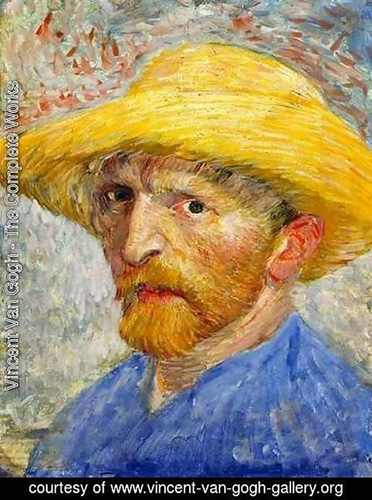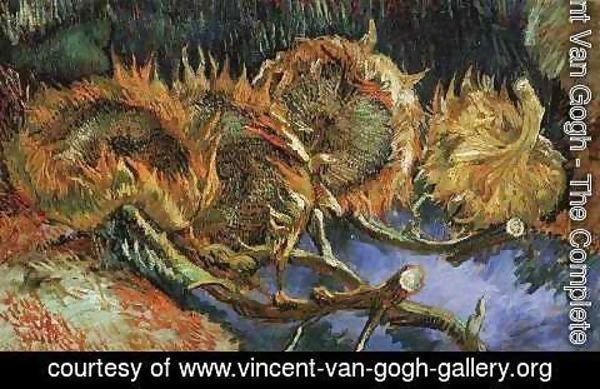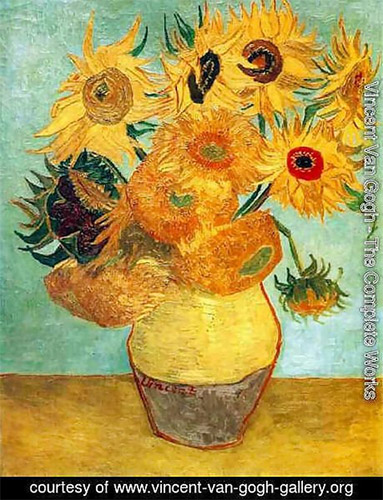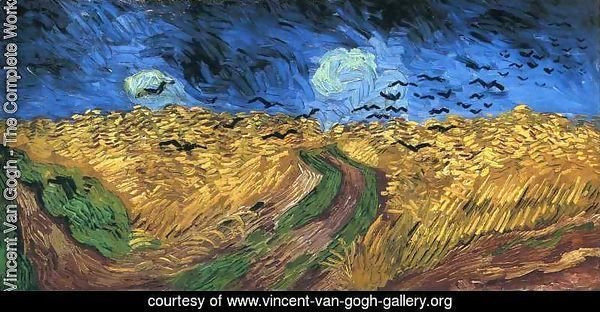Vincent Van Gogh’s Yellow Vision
The Dutch representative of impressionism, Vincent Van Gogh, along with such geniuses of painting as Leonardo Da Vinci and Pablo Picasso, is one of the three most famous artists of the world. But it was Van Gogh, who remained in the memory of millions of people as a half-mad genius with a set of many deviations from the socially accepted perception of man. Until now, there is no single understanding of exactly what kind of insanity Van Gogh had. Some say it was epilepsy. Most likely he had an epileptic psychosis. In honor of the famous artist, the medical term Van Gogh Syndrome even appeared. This term refers to the state of a mentally ill person when he inflicts irreparable bodily harm on himself. This happened to Vincent when he suffered from severe dizziness and a constant sensation of loud noise. This is a well-known fact, when he was unable to endure this terrible state, he cut off the tip of his ear.

Vincent van Gogh art, like many other artists of impressionism, distinguished by its unusually vibrant colors. His oil paintings of various times were filled with red, green, and bright blue. Nevertheless, it was yellow that was clearly a favorite color, especially in his later landscape paintings.
We invite you to admire Van Gogh paintings at vincent-van-gogh-gallery.org.
Yellow
Typically, artists use a very wide palette of colors and shades. But it’s hard to say about Van Gogh art. He preferred to choose the main color and write his works in the main color key. The artist had a special love for this tone. After his move to Arles, he wrote many paintings and they can be easily identified precisely by the yellow color. Van Gogh wrote to his brother Theo that this color was the highest manifestation of love for him. The artist was happy that it is yellow that can convey the sun and light.
It is worth mentioning that psychologists attribute this color and its frequent choice to the manifestation of madness. What undoubtedly took place in the life and work of the artist. Art historians and biographers are convinced that the artist used yellow especially at the moments of psychological exacerbations.
Also, a distinctive feature of Van Gogh was his particular point technique and elements of pointillism. He used specially sharpened reed stems for drawing points. Since Van Gogh drew a lot, and poor finances did not allow him excesses, he used improvised means in his work. And with its huge volumes of works created by him, the brushes wore out very quickly.
Sunflowers

Van Gogh painted two cycles of Sunflowers paintings in yellow. The first of them was written in 1887 and it belongs to the Paris period. It consists of two paintings of lying sunflowers. The second cycle was Arles, written a year later. This series consists of four works of sunflowers in decanters. In addition to these paintings, Van Gogh wrote several more variations on this subject. Van Gogh sunflowers are the same recognizable symbol as Jacond for Da Vinci, as the Black Square for Malevich.

To create Sunflowers, Van Gogh used a special technique of applying paint to a canvas. He put very thick layers on a rough surface. He also used not only brushes but also special knives to create relief.
A series of paintings written in Arles, in the south of France, was intended to decorate the room of Paul Gauguin. They were close friends with Van Gogh and at one time worked together in the Yellow House in Arles in October-December 1888.
The sunflower cycle is one of the most copied and there are many fakes of these paintings.
Wheatfield with Crows
This work is considered the last in the life of the artist. He wrote it 19 days before his death.

The wheatfield with crows picture truly produces a disturbing feeling. A heavy dark sky in deep color, as if before a thunderstorm, gloomy blackbirds, three roads leading to nowhere among the rippling waves of a wheat field. The plot, performance, and color scheme inspire not only anxiety, but also a feeling of longing, depression, and wilting. The sky turns black, scary birds whether fly away, frightened by strangers’ sounds, or they fly menacingly at the contemplator.
All this creates an atmosphere of complex experiences. Art historians argue that the picture is made by sharp, jerky, and even nervous strokes. In some places, brush strokes of the sky even cover the silhouettes of birds, as if the movements were too hasty to be precise. Critics explain this plot by the author’s intention to leave this world. They say it was after the completion of this picture, at this very place the author took his own life.
One thing is for sure – the life and work of this talented and probably not very happy person have left an indelible mark on the world of art. There are still polemics about secret designs, styles, and mysterious elements in soul-inspiring works. No one can remain indifferent to this mystical beauty.




